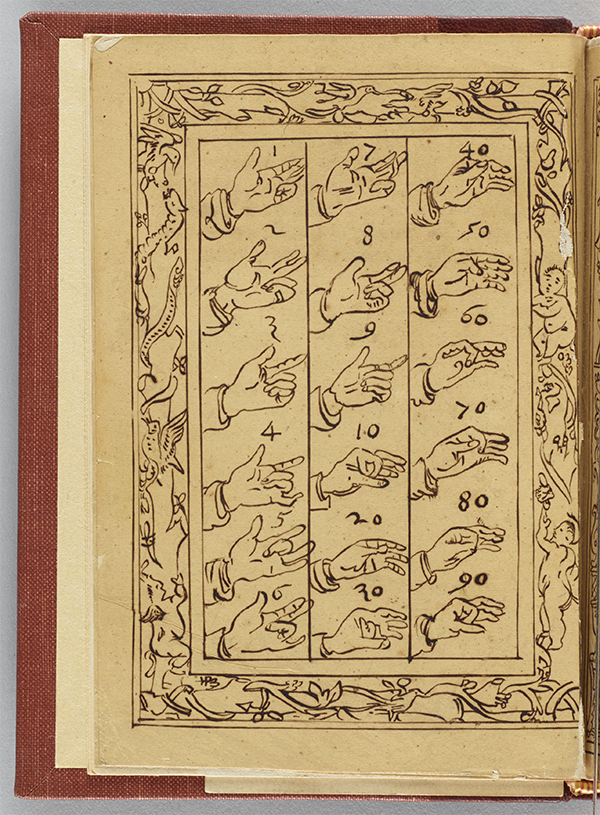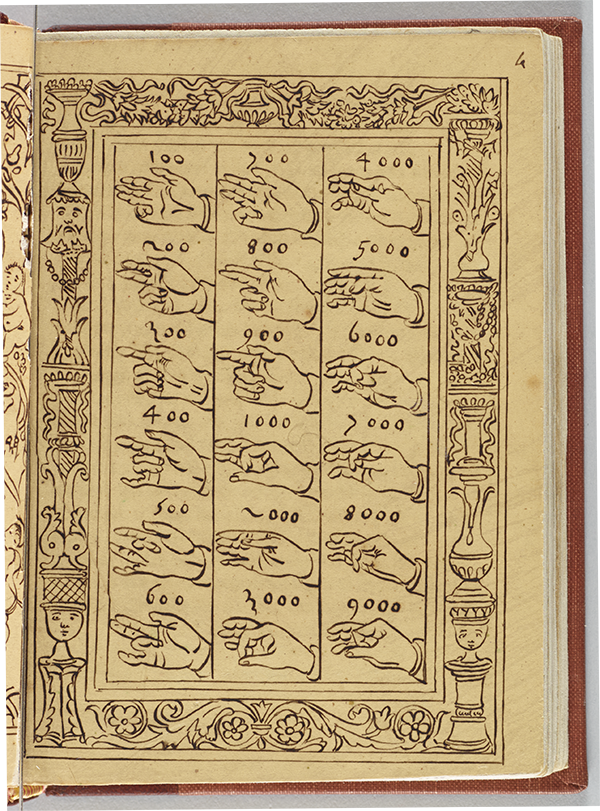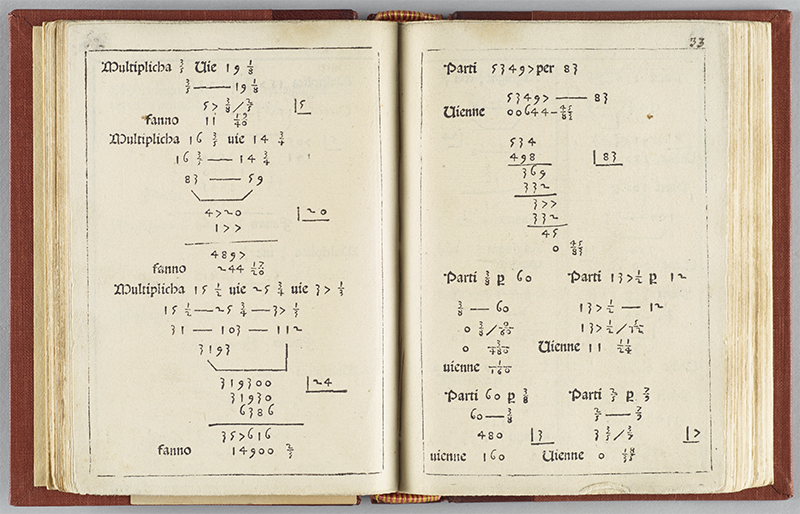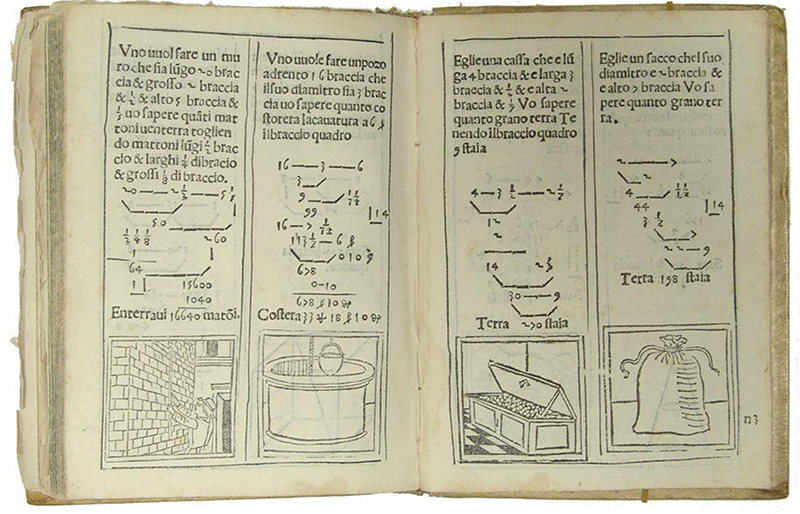- About MAA
- Membership
- MAA Publications
- Periodicals
- Blogs
- MAA Book Series
- MAA Press (an imprint of the AMS)
- MAA Notes
- MAA Reviews
- Mathematical Communication
- Information for Libraries
- Author Resources
- Advertise with MAA
- Meetings
- Competitions
- Programs
- Communities
- MAA Sections
- SIGMAA
- MAA Connect
- Students
- MAA Awards
- Awards Booklets
- Writing Awards
- Teaching Awards
- Service Awards
- Research Awards
- Lecture Awards
- Putnam Competition Individual and Team Winners
- D. E. Shaw Group AMC 8 Awards & Certificates
- Maryam Mirzakhani AMC 10 A Awards & Certificates
- Two Sigma AMC 10 B Awards & Certificates
- Jane Street AMC 12 A Awards & Certificates
- Akamai AMC 12 B Awards & Certificates
- High School Teachers
- News
You are here
Mathematical Treasures - Early Printed Italian Arithmetic
The Trattato di arithmetica published in Florence in 1491 was an innovative Italian arithmetic book. Its author was Filippo Calandri for whom little personal information is available other than that he seemed to be a knowledgeable mathematician. The Arithmetica was the first printed arithmetic book in Italy to include illustrations. Calandri also introduced his readers to the “a danda” algorithm for long division, the form that is popularly used today.

Pages 3 and 4 from the Arithmetica show the finger numerals in use at this time. Page 3 contains the finger gestures for units and tens; page 4 continues with the gestures through the hundreds into the thousands.


Here on pages 32–33 (pagination was added to some editions by hand after publication), we see demonstrations of the multiplication of mixed numbers. On page 33, there is an example of division of 53497 by 83, by the a danda method, with the answer given as a mixed fraction.

These three pages contain a series of illustrated problems. Several of these problem situations have served as problem templates for centuries. The viewer should be able to identify some of these.

Soon after its publication, Calandri’s Trattato was made into an illustrated manuscript and some of its problem situations were rendered as colorful illuminations. This 15th-century Italian manuscript now resides in the Biblioteca Riccardiana in Florence, where it is identified as Ricc 2669. For three images from it, see Figures 7, 10, and 12 in Randy Schwartz’s article, 'He Advanced Him 200 Lambs of Gold': The Pamiers Manuscript, here in Convergence.
The images above are from the George Arthur Plimpton Collection and are presented through the courtesy of the Columbia University Libraries.
Frank J. Swetz (The Pennsylvania State University), "Mathematical Treasures - Early Printed Italian Arithmetic," Convergence (January 2021)




